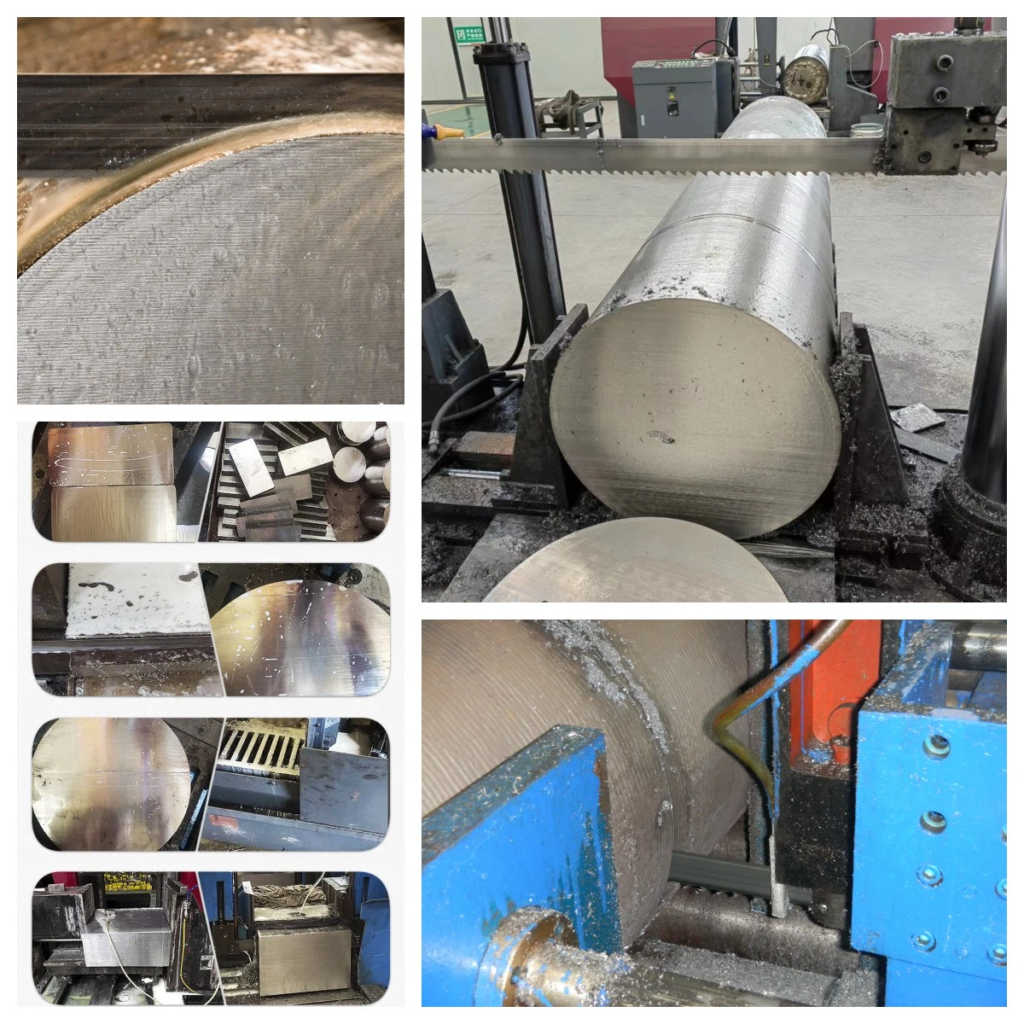Are you looking to get smooth, precise cuts on metal? Choosing the right bandsaw blade is crucial to getting the best performance and the longest life when cutting metal. The wrong blade will give you poor cuts, low efficiency, and will waste your materials. Let’s look at the different types of band saw blades that are made specifically for cutting metal, so you can make the right choice.
The main types of band saw blades for cutting metal are bi-metal blades, carbon steel blades, carbide-tipped blades, and specialty blades. Each type has its own specific uses, pluses, and minuses that will affect the quality and efficiency of your cuts. Understanding these blades will help you pick the right one for you.
Using the right blade can make a huge difference in your work. Let’s go through the details of each blade type and how they can best serve you when cutting metal.
Bi-Metal Bandsaw Blade
Bi-metal bandsaw blades are the most common blades used in the metalworking industry. They have a high-speed steel (HSS) tooth edge that’s welded to a tough, flexible alloy steel back. This combination makes them versatile and durable for many different kinds of metal cutting.
Applications
- Carbon Steel: Handles various grades with ease.
- Alloy Steel & Tool Steel: Efficiently cuts through tougher steels.
- Stainless Steel: Performs well on stainless, maintaining cutting efficiency.
- Non-Ferrous Metals: Works well on metals like brass, copper, and aluminum.
Advantages
- Longer Blade Life:The HSS teeth give you durability and keep their sharpness longer..
- Versatility:Can cut a range of materials from softer metals to tougher alloys.
- Cost-Effective: Cost more than carbon steel blades, but the longer blade life and performance make it worth it.
Best Use
If you’re a metal fabricator and need to cut many different materials, but you don’t want to change your blade all the time, then a bi-metal blade is probably your best choice. These blades are perfect for shops that need high production and clean cuts on various metals.
Carbide-Tipped Band Saw Blades
Carbide-tipped band saw blades are high-performance blades for cutting hard materials. These blades have carbide teeth, which is an extremely hard material that resists wear. The design of these blades allows them to handle cutting jobs that other blades simply can’t do as well.
Applications
- Hardened steel and tough alloys: Cut through hardened materials and exotic alloys like Inconel, titanium, and high-speed steel.
- Stainless steel and cast iron:Work great on stainless steel and cast iron and have less wear.
- High-volume cutting:Good for continuous, high-production environments.
Advantages
- Durability: The carbide teeth last a long time and resist wear.
- Precise and fast cuts: These blades are designed for tough, precise cuts with minimum vibration.
- Tough materials: Work great on hard, abrasive, dense metals where bi-metal blades might struggle.
Best Use
Carbide-tipped blades are perfect for industrial and manufacturing environments where they cut a lot of hard metals and need precision and high productivity. They’re also great for fabricators who need to cut materials that need a nice, smooth, clean finish.
Carbon Steel Band Saw Blades
Carbon steel bandsaw blades are an inexpensive option for cutting softer metals. The blade is made entirely out of carbon steel, which is cheap. However, they wear out faster than bi-metal and carbide-tipped blades. These blades are good for lighter duty applications.
Applications
- Soft Metals: Suitable for cutting non-ferrous metals like aluminum, brass, and copper.
- Plastics & Wood: Also good for light cutting applications in non-metal materials.
Advantages
- Cost-effective: They are cheap, so they’re good for a shop that doesn’t want to spend a lot of money upfront.
- Re-sharpenable: You can resharpen them a few times before you throw them away.
- Simple cuts: They’re good for simple cuts on softer materials where you don’t need a lot of precision.
Best Use
Carbon steel blades are great for hobbyists or small shops that mainly cut softer metals or need an inexpensive blade for occasional use.
Specialty Band Saw Blades
Specialty bandsaw blades are blades that are made for a specific type of cutting or a specific metal. They may have different tooth patterns, coatings, or designs that are meant for a specific application. This could be cutting thin-walled tubing, cutting profiles, or making intricate cuts that a standard blade can’t do as well.
Applications
- Thin-walled tubing and profiles: They have different tooth configurations that are made to cut through thin-walled materials without bending them.
- Low vibration blades: Blades with special tooth patterns that give you a smooth cut with less noise and vibration.
- Metal composites and non-ferrous metals: Blades with different coatings (like titanium nitride) for specific metals or composites.
Advantages
- Performance: They have a special design that helps you cut better or cut more accurately for a specific application.
- Longer blade life in certain applications: Using the right specialty blade might make your blade last longer and reduce your material waste.
- Precision cuts: They give you a better cut or a more precise cut on certain materials like thin-walled sections or intricate patterns.
Best Use
If you’re working on a specific project where you need a certain type of cut, then a specialty blade is the way to go. These blades are for people who need consistent quality and precision in a specific application.
Choosing the Right Bandsaw Blade for Metal Cutting
When choosing the right blade, you’ll need to consider:
- Type of metal: Softer metals can be cut with carbon steel blades, but harder metals will require bi-metal or carbide-tipped blades.
- Material thickness: Thicker materials need blades with fewer teeth per inch (TPI) for faster cutting, while thinner materials need a higher TPI for a smooth cut.
- Cutting speed and finish: Carbide-tipped blades are great for fast, smooth cuts. Carbon steel blades are good for basic, slower cuts on softer metals.
- Cost vs. longevity: A cheaper carbon steel blade might be a good initial investment, but a bi-metal or carbide-tipped blade will usually last longer and perform better, saving you money in the long run.
Matching Blade Type to Application
- General metal cutting (a little bit of everything): Use a bi-metal blade.
- Light duty and soft metals: Use a carbon steel blade.
- Tough, abrasive metals: Use a carbide-tipped blade for better performance.
- Specialty cuts: Use a specialty blade for unique or intricate cuts.
Conclusion
Understanding the different types of bandsaw blades for metal cutting helps you make better decisions to cut faster and cleaner, make your blades last longer, and do better work. By choosing the right blade for the job, whether it’s a versatile bi-metal blade, an economical carbon steel blade, a high-performance carbide-tipped blade, or a specialized blade, you’ll get the best results for the work you do.



